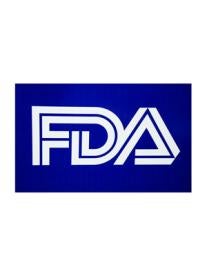FDA final guidance will have significant impact on marketing of biologics, biosimilars and related products.
This month, FDA issued its final guidance on Nonproprietary Naming of Biological Products (Naming Guidance). The Naming Guidance represents a new framework for the entire category of biological products, including biosimilars. Instead of using nearly identical labeling for a biosimilar and its reference product, FDA now is requiring the use of a proper nonproprietary name (proper name) for each originator biological product, related biological and biosimilar product. The Proper Name will be a combination of a “core name” and a distinguishing suffix for each product which is composed of four lowercase letters devoid of any meaning. (Naming Guidance at 1.)
Notably, all previously licensed biologics under section 351(a) or 351(k) of the Public Health Service (PHS) Act will be renamed with a new suffix. (Id.) Also, the new requirement does not address how to designate interchangeability of biosimilars for which FDA is still considering the appropriate format. (Id.) FDA believes that the new framework will assist in pharmacovigilance efforts, avoid inadvertent substitution, and therefore prevent medication errors. The framework is also anticipated to ease use of the Purple Book which will group related products together, presumably facilitating easier comparisons among products.
The framework, which will have significant commercial implications, was published as a guidance document rather than a binding regulation. Therefore, there remains opportunity for further industry dialogue around the acceptability of the framework, especially as FDA leadership and policy change during the Trump administration. Further, the effective date of the guidance will be delayed at least 60 days as the White House and new agency heads review all recently issued guidances and regulations. See here the memorandum dated January 20, 2017, from Reince Priebus, Assistant to the President and Chief of Staff, to heads of the executive departments and agencies.
I. Biological Product Naming
Originator biological products will have a core name that is the adopted name designated by the United States Adopted Names (USAN) Council for the relevant biological substance when available. (Id. at 7.) If the product is a related biological product, a biosimilar product, or an interchangeable product, the core name will be the same as the relevant previously licensed reference product. (Id. at 7-8.) The use of a common core name will indicate a relationship among the products. (Id. at 8.) FDA may also use an identifier attached as a prefix to distinguish some products from previously licensed products to help avoid medication errors and facilitate pharmacovigilance, e.g., ado-trastusumab emtansine vs.trastuzumab. (Id.)
For biological products previously licensed under the PHS Act, their revised proper name generally would include the original proper name serving as the “core name” followed by a distinguishing suffix attached with a hyphen. (Naming Guidance at 2.) While FDA is continuing to consider how implementation of this process will occur, it intends to assign distinguishing suffixes to a group of previously licensed products. (Id.) However, FDA will also accept submissions of prior-approval labeling supplements to Biologics Licensing Applications (BLAs) containing up to 10 proposed suffixes and any supporting analyses demonstrating the proposed suffixes are unique, devoid of meaning, and not false or misleading. (Id. at 2, 9.) Notably, the suffixes will not be allowed to use any symbols or numbers, other than a hyphen. The suffix will also not be allowed to look similar to or otherwise connote the name of the license holder. (Id. at 10).
Going forward, an applicant (either under section 351(a) or 351(k) of the PHS Act) should propose a suffix comprising four lowercase letters to use as the distinguishing identifier in the FDA-designated proper name. (Id. at 9.) Submission of up to 10 proposed suffixes in order of preference can be made no earlier than the request for a pre-BLA meeting for biologics, or for biosimilars; the request for the biosimilar development type 4 meeting. (Id.) Any supporting analyses of the proposed suffixes should also be included for FDA’s consideration. (Id.)
The timing of the requests will avoid a race by the applicant to file early for suffixes to establish market position (e.g., “ab” suffixes presumably would be listed in formularies or other compilations before “xy” suffixes). There is no discussion in the guidance about appeal mechanisms or process in the event that two or more applicants seek the same suffix. If the applicant does not submit an acceptable suffix by the time of product approval, FDA may elect to choose the suffix.
II. FDA Rationale for the Suffix Framework
A. Enhanced Pharmacovigilance
FDA stated that the suffix approach should help ensure patient safety by enhancing its ability to track adverse events to a specific manufacturer and “allow surveillance systems to detect safety signals throughout the life cycle of a product.” (Naming Guidance at 4.) This will enable targeted remedial action to address any concerns and avoid implicating a broader group of products that do not have similar problems. (Id.) The use of proper names with distinguishing suffixes will assist in pharmacovigilence efforts by identifying specific products in spontaneous adverse event reporting as FDA’s current experience is that proprietary names and National Drug Code (NDC) numbers are rarely used to report adverse events, and may be changed over time by license holders. (Id. at 5.)
FDA also notes that the use of distinguishing suffixes will “reinforce accurate product identification in billing and claims records used for active pharmacovigilance” (Id.) This will also make it easier for government healthcare programs to track purchasing and pricing patterns around these products.
B. Avoidance of Inadvertent Substitution
FDA also stated that its proposed naming convention will help prevent “inadvertent substitution,” which could include unintentional switching between biological products not determined by FDA to be interchangeable. (Id.) FDA is concerned that if originator biological products, related biological products, and biosimilar products all share a proper name, inadvertent substitution could lead to medication errors, including providing a patient with a product having a different delivery system or route of administration from what was prescribed, leading to confusion and dosing errors. (Id. at 6.) The use of the same proper name could also cause confusion amongst healthcare providers, who might incorrectly assume that all products with the same proper name are interchangeable. (Id.) FDA did not cite any support for these concerns, however.
C. Avoidance of Inaccurate Perceptions
FDA stated that the use of an FDA-designated suffix in biological products’ nonproprietary name will avoid inaccurate perceptions of the safety and effectiveness of biological products. (Id. at 7.) FDA believed that applying the suffix naming convention only to those biological products licensed under section 351(k) of the PHS Act would create the false impression that biosimilar products were different from their reference products in some clinically meaningful way or somehow inferior to their reference products. (Id.) FDA also noted that there may be confusion among healthcare providers in using biological products based on their historical use of small molecule drugs and their generic versions.




 i
i

